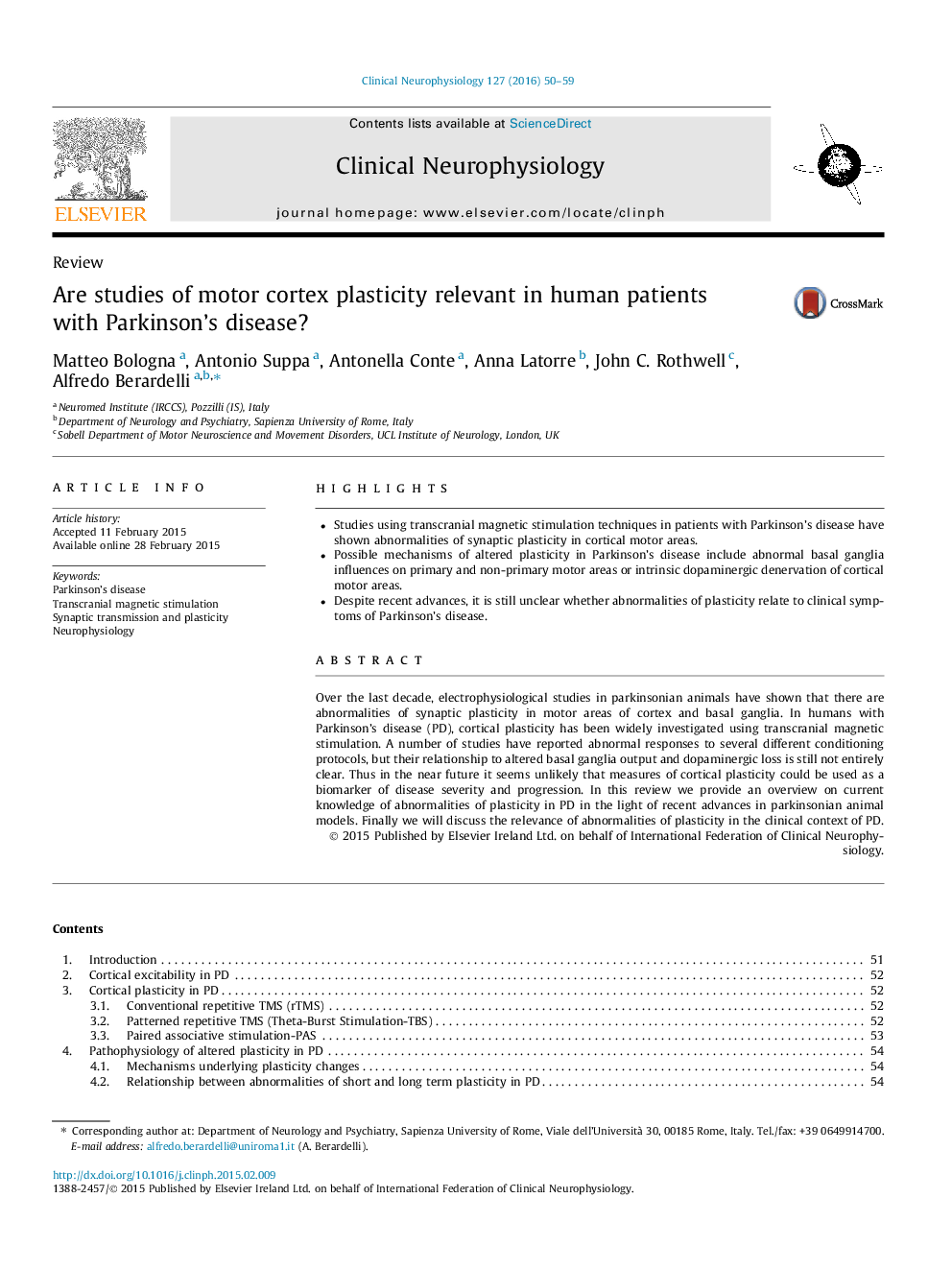| Article ID | Journal | Published Year | Pages | File Type |
|---|---|---|---|---|
| 6007830 | Clinical Neurophysiology | 2016 | 10 Pages |
â¢Studies using transcranial magnetic stimulation techniques in patients with Parkinson's disease have shown abnormalities of synaptic plasticity in cortical motor areas.â¢Possible mechanisms of altered plasticity in Parkinson's disease include abnormal basal ganglia influences on primary and non-primary motor areas or intrinsic dopaminergic denervation of cortical motor areas.â¢Despite recent advances, it is still unclear whether abnormalities of plasticity relate to clinical symptoms of Parkinson's disease.
Over the last decade, electrophysiological studies in parkinsonian animals have shown that there are abnormalities of synaptic plasticity in motor areas of cortex and basal ganglia. In humans with Parkinson's disease (PD), cortical plasticity has been widely investigated using transcranial magnetic stimulation. A number of studies have reported abnormal responses to several different conditioning protocols, but their relationship to altered basal ganglia output and dopaminergic loss is still not entirely clear. Thus in the near future it seems unlikely that measures of cortical plasticity could be used as a biomarker of disease severity and progression. In this review we provide an overview on current knowledge of abnormalities of plasticity in PD in the light of recent advances in parkinsonian animal models. Finally we will discuss the relevance of abnormalities of plasticity in the clinical context of PD.
